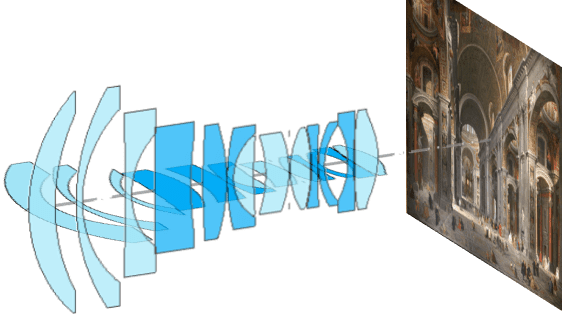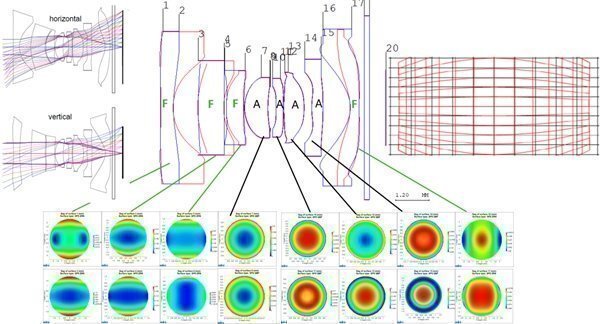
Prof. Vladan Blahnik
Image: Private.Prof. Dr. Vladan BLAHNIK
Email: vladan.blahnik@uni-jena.de
Phone: +49 3641-9-47840 and +49 160 90828382
Prof. Dr. Blahnik heads the department “Optical System Design and Simulation” at the Institute of Applied Physics of Friedrich Schiller University of Jena.
From 2001 to 2022, he worked in various positions at Carl Zeiss AG in Oberkochen, first as Lead System Engineer in optical lithography at ZEISS SMT, then as Head of Optical Design for photo, film and industrial lenses, later in ZEISS Corporate Research on projects for strategic business development in lithography, industrial solutions, interferometry, microscopy, smartphone imaging, medical technology and consumer solutions. From 2022 to 2024, he worked at Hensoldt AG as a Principal Scientist Optical System Design and developed optical designs of complex metrology systems for beam targeting in EUV scanners, space telescopes and various zoom lenses for multispectral and thermal imaging systems.
With his appointment to the Chair of Optical System Design and Simulation, previously held by Prof. Herbert Gross, Prof. Blahnik started in 2024 to establish a theoretical research group that will explore the fundamentals of optical system design and work closely with research and industry partners on various applications that require sophisticated optical systems and their modeling.
Research Areas and Methods
Prof. Blahnik's research group is focused on extending the fundamentals and methods of optical system design and simulation. Research questions are how modern optical technologies such as meta-lenses, diffractive optics, gradient-index lenses, freeform surfaces can be used efficiently in optical systems, how AI can be incorporated in optical design methodology and how concepts and architectures of optical systems can be extended to create new fields of application.
Optical System Design
- Design of optical systems for modern applications
- Aberration theory
- Performance evaluation of optical systems
- Optimization methods and strategies in optical design
- Tolerancing of optical systems
- Emerging optical technologies and components in optical systems
Physical-optical Simulation
- Coherent, noncoherent and partially coherent light propagation and image formation
- Point spread function engineering
- Digital-optical co-optimization and computational imaging
- Virtual prototyping, holistic simulation
- Straylight and scattering in optical systems
Conceptional layout and system engineering of optical systems
- Layout of optical systems
- Systematic budgeting of performance and cost parameters
- Novel optical system architectures
Teaching fields
Vladan Blahnik teaches courses ranging from fundamentals of optics and optical modeling to special lectures on optical design and physical-optical simulation. Models range from geometric optics for aberration theory to wave optics for partially coherent light propagation or imaging. Lectures on the fundamentals are complemented by application-oriented lectures and seminars where students are introduced to the systematic use of professional optical design software for the layout, optimization and tolerance of optical systems or for performing physical-optical simulations.
In the advanced courses in optical design (special courses MSc and PhD), the acquired knowledge and methods are applied to more complex optical design projects on complex state-of-the-art optical systems, which also require a structured combination of application requirements and specifications with a solid knowledge of modern optical technologies and a creative approach to developing optical designs.
Recent Research Results
Parts of our detailed review article on smartphone imaging technology [1], which describes current smartphone multi-camera systems in terms of optical design (see also [2]), optical technology, image stabilization technology, image processing, and computational imaging, have recently been presented at various conferences.
Examples of different principles of modern optical imaging.
Image: Prof. Vladan BlahnikThe perspective Pannini projection, named after the artist Giovanni Pannini (1691-1765) of the Italian school of vedutismo, which is excellently suited to project natural wide-angle images, was first used as an optical design with lenses whose optical surfaces contain cylindrical, toroid or free-form surfaces [3]. In addition, it was shown that a cylindrical shape of the image sensor is advantageous and would be much easier to implement than the efforts already made over about two decades in the technological implementation of spherical surfaces. Designs of this new type of wide-angle lens have been presented for various application areas in cinematography, industrial photo optics or smartphone optics at various international optics design conferences and provide application examples for compact components with locally highly variable refractive power distribution such as freeform surfaces or GRIN media.
Examples of realizations of the Pannini projection in optical lens design.
Image: Prof. Vladan BlahnikThe perspective Pannini projection, named after the artist Giovanni Pannini (1691-1765) of the Italian school of vedutismo, which is excellently suited to project natural wide-angle images, was first used as an optical design with lenses whose optical surfaces contain cylindrical, toroid or free-form surfaces [3]. In addition, it was shown that a cylindrical shape of the image sensor is advantageous and would be much easier to implement than the efforts already made over about two decades in the technological implementation of spherical surfaces. Designs of this new type of wide-angle lens have been presented for various application areas in cinematography, industrial photo optics or smartphone optics at various international optics design conferences and provide application examples for compact components with locally highly variable refractive power distribution such as freeform surfaces or GRIN media.
[1] Blahnik and Schindelbeck, Adv. Opt. Tech. 10, 145-232, (2021).
[2] Steinich and Blahnik, Adv. Opt. Tech. 1, 51-58 (2012).
[3] Blahnik, „Pannini-Objektiv und abbildendes optisches Gerät“, DE102021103323.3 &
“Pannini Lens and imaging optical device”, WO2022171413A1 (2021).


